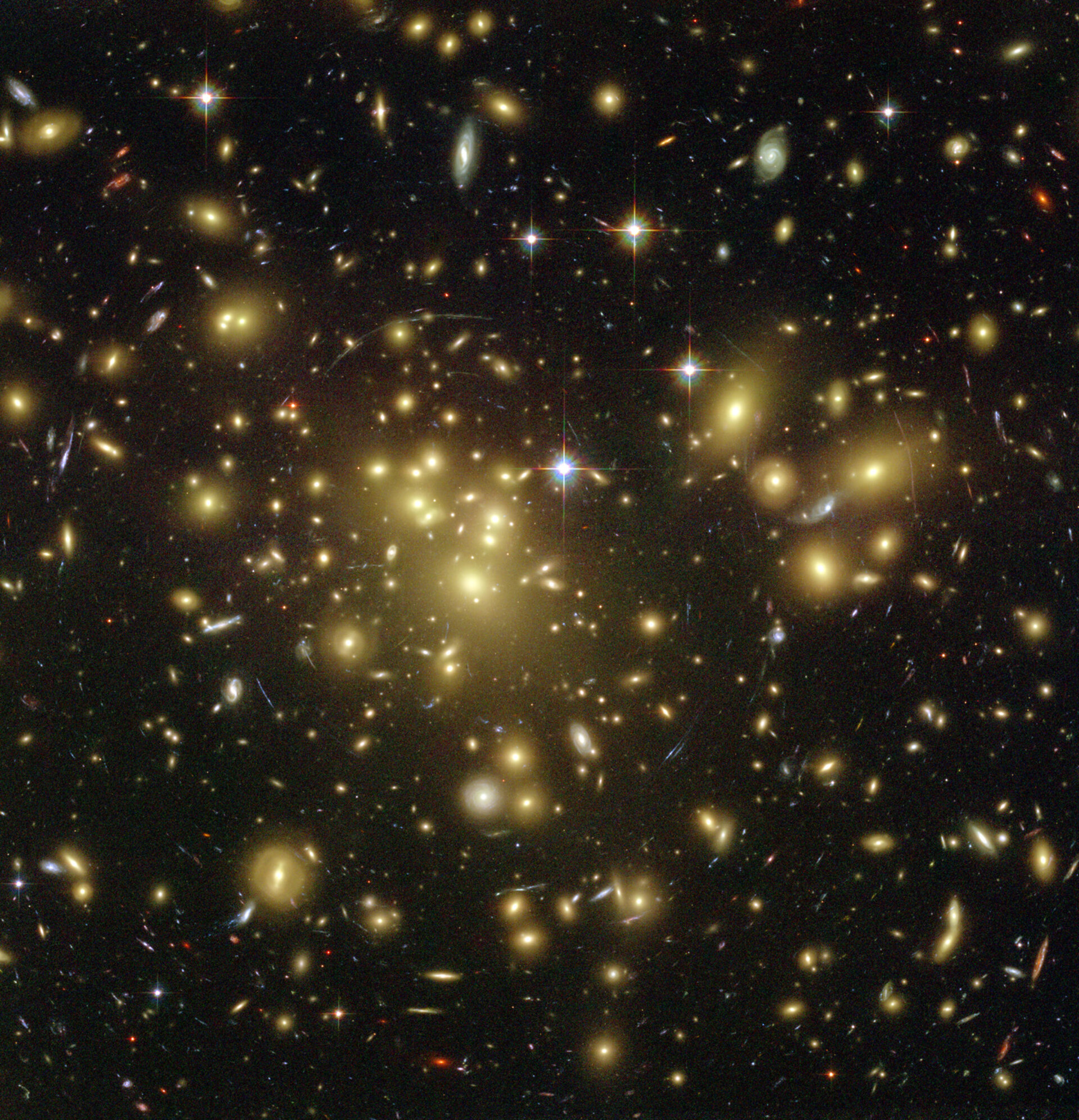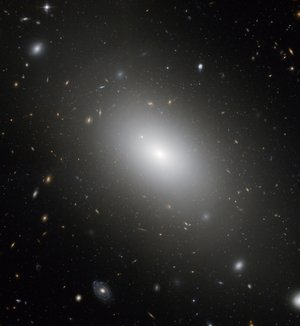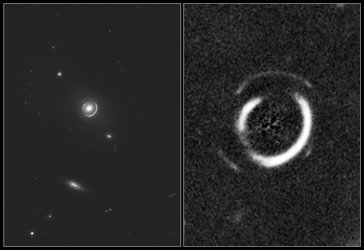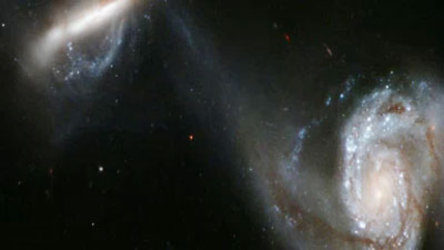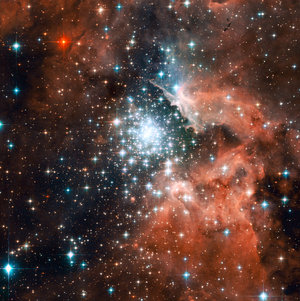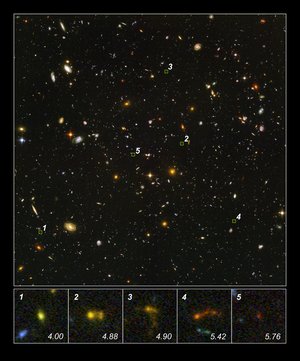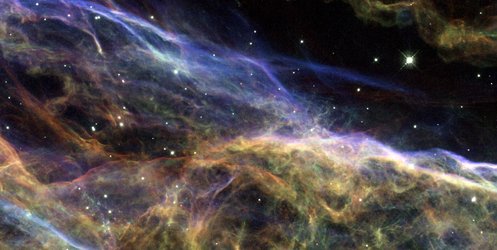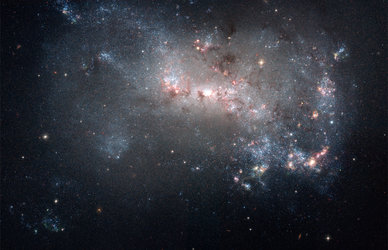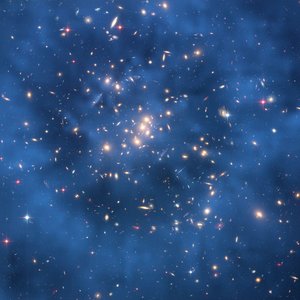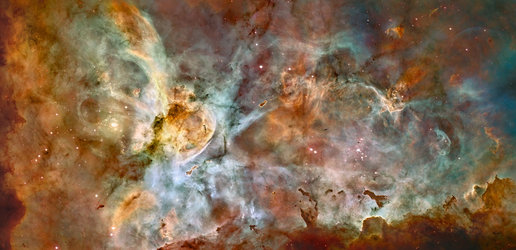Hubble: One of the youngest and brightest galaxies found
Hubble has used a boost from a natural lens and found the strongest evidence so far, for one of the youngest and brightest galaxies ever seen in the middle of the cosmic ‘dark ages’, just 700 million years after the beginning of our universe.
Hubble’s Near Infrared Camera and Multi-Object Spectrometer (NICMOS) has revealed an infant galaxy, A1689-zD1, undergoing a firestorm of star birth shortly after the Big Bang, before the first stars completed the reheating of the cold, dark universe. Images from NASA’s Spitzer Space Telescope have provided additional evidence that it was a young star-forming galaxy in the dark ages.
“We certainly were surprised to find such a bright young galaxy 13 thousand million years in the past”, said astronomer Garth Illingworth of the University of California, Santa Cruz, USA, a member of the research team.
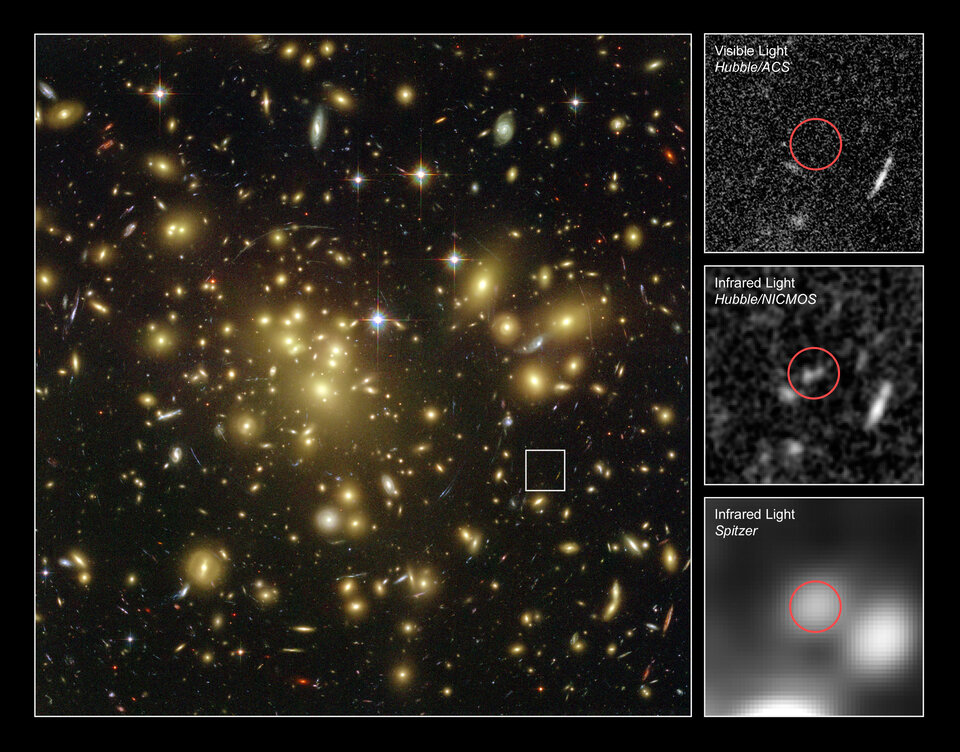
“This object is the strongest candidate for the most distant galaxy so far,” states team member Piero Rosati from the European Organisation for Astronomical Research in the Southern Hemisphere (ESO), Germany.
“The Hubble images provide insight into the galaxy’s structure that we cannot get with any other telescope,” added astronomer Rychard Bouwens also at the University of California, Santa Cruz, one of the co-discoverers of this galaxy.
The new images should offer insights into the formative years of galaxy birth and evolution and yield information on the types of objects that may have contributed to ending the dark ages. During its lifetime the Hubble telescope has peered ever farther back in time, viewing galaxies at successively younger stages of evolution. The new Hubble and Spitzer images of A1689-zD1 show a time when galaxies were in their infancy.

Current theory holds that the dark ages began about 400 000 years after the Big Bang, as matter in the expanding universe cooled and formed clouds of cold hydrogen. These cold clouds pervaded the universe like a thick fog. At some point during this era, stars and galaxies started to form. Their collective light heated and cleared the fog of cold hydrogen, and ended the dark ages about a thousand million years after the Big Bang.
“This galaxy is presumably one of the many that helped end the dark ages”, said astronomer Larry Bradley of Johns Hopkins University in Baltimore, USA, and leader of the study. “Astronomers are fairly certain that high-energy objects such as quasars did not provide enough energy to end the dark ages of the universe. But many young star-forming galaxies may have produced enough energy to end it.”
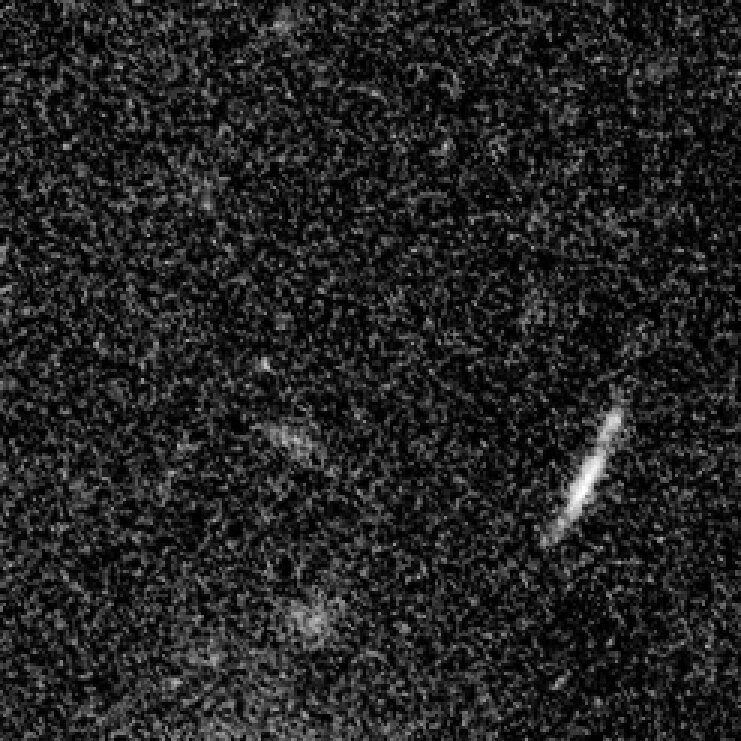
The galaxy is so far away that it did not appear in optical images taken with Hubble’s Advanced Camera for Surveys, because its light is stretched to infrared wavelengths by the universe’s expansion. It took Hubble’s NICMOS, Spitzer and a trick of nature called gravitational lensing to see the faraway galaxy.
The astronomers used a relatively nearby massive cluster of galaxies known as Abell 1689, roughly 2.2 thousand million light-years away, to magnify by nearly 10 times the light from the more distant galaxy directly behind it. Abell 1689 is one of the most spectacular and well-known natural gravitational telescopes.

Spitzer images show that the galaxy’s mass is typical of galaxies in the early universe, equivalent to several thousand millions of stars like our Sun, or a fraction of the mass of the Milky Way. “This observation confirms previous Hubble studies that star birth happens in very tiny regions compared with the size of the final galaxy”, Illingworth said.
The astronomers will conduct follow-up observations with infrared spectroscopy to confirm the galaxy’s distance using ESO’s Very Large Telescope (VLT) and the Keck telescope atop Mauna Kea in Hawaii.
Notes for editors:
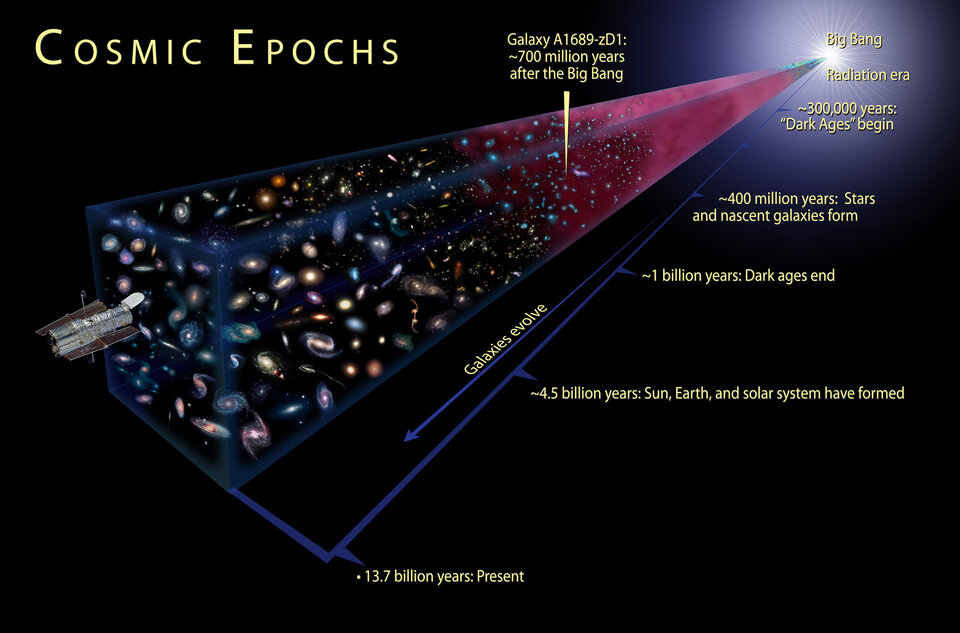
The Hubble Space Telescope is a project of international cooperation between NASA and ESA.
The results will be published in the Astrophysical Journal.
For more information:
Narciso Benitez, Instituto de Astrofísica de Andalucía, Spain
E-mail: Benitez @ iaa.es
Larry Bradley, Johns Hopkins University, Baltimore, Md.
E-mail: Ldb @ pha.jhu.edu
Piero Rosati, ESO, Munich, Germany
E-mail: Prosati @ eso.org
Garth Ilingworth, University of California, Santa Cruz, USA E-mail: Gdi @ ucolick.org
Lars Lindberg Christensen, Hubble/ESA, Garching, Germany
E-mail: Lars @ eso.org
Ray Villard, Space Telescope Science Institute, Baltimore, USA
E-mail: Villard @ stsci.edu


